So after the marathon UN conference in Rio, I had one last day to enjoy poking around the city on my own. I could have spent it literally following my nose—to all the corner bakeries and sandwich shops for buttery jelly-filled cookies (for breakfast too? Yes!) or yet another exotic fruit juice combo (pineapple-mint-orange? Yum!).
But instead I took a taxi to the Botanical Gardens to get to know birds half a world away from home. How could I pass up this chance? A new Brazilian friend promised the birds would be so close I wouldn’t even need my tiny new travel binoculars. She was exaggerating. But only slightly.
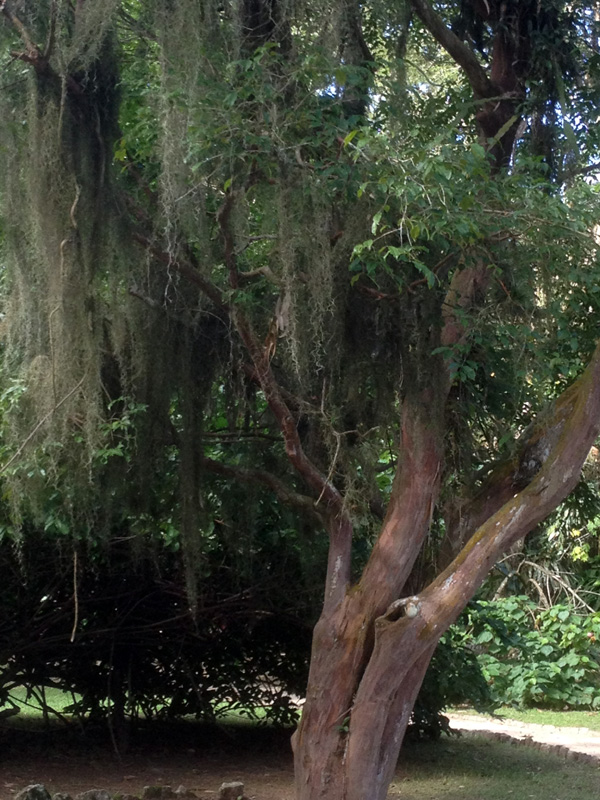 There was only one problem: how do you ID birds on the road when you haven’t invested in the frightfully expensive web connection? I merely took some notes and then waited until I was home to check the web.
There was only one problem: how do you ID birds on the road when you haven’t invested in the frightfully expensive web connection? I merely took some notes and then waited until I was home to check the web.
Lucky for me, one photographer has posted beautiful shots of hundreds of birds from southeastern Brazil. With the help of Paul Gale, I can now recognize some birds of the southeast Atlantic rainforest—a few of the 140 who live in the Botanical Gardens of Rio de Janeiro.
The most common one I saw was this beautiful bird about the size of a robin with the squat head, long beak, and short tail that in profile reminded me of a kingfisher. It’s a great kiskadee:
Great kiskadees hang out in the tops of palm trees and chirp a single, sharp note.
The very first bird I saw was huge, about the size of a pheasant, sitting in the low shady branches of ground-hugging trees. My little binocs revealed something I would have missed otherwise: the red wattle. This is the dusky-legged guan:
Of course there were tons of small parrots, like conures, which reminded me of The Wild Parrots of Telegraph Hill, one of my favorite-ever movies. These were—I think—maroon-bellied parakeets, beautiful birds with orangish tail tips and blue wingtips:
High overhead the vultures were wheeling—black vultures, with whitish coloring on the underside of their primaries:
Of course there was the South American equivalent of our robin, the rufous-bellied thrush. (The American robin is also a thrush, also rufous bellied.)
And swallows galore were winging here and there in the open air between tall trees. The ones I saw were blue-and-white swallows:
The most vivid bird I saw was a small bird that darted swiftly in and out of the foliage of short trees, and without my binocs I’d have missed it—the green-headed tanager:
Unless they were male green honeycreepers; juveniles are also multicolored:
Either way, they were bright. And beautiful.
Of course, there were the small brown birds whom I still haven’t been able to identify. My notes say “sparrow-like with pointed beak; clear breast; orangeish behind ears” for the one and “sparrow-like with olive-yellow breast; hunts on ground” for the other. They will have to remain LBJs, little brown jobs.
My trip to Brazil was complete when I saw monkeys—the adorable common marmosets, small as squirrels with tufted ears. They ran up, down, and around trees, grooming one another or just lying on a branch next to a friend.
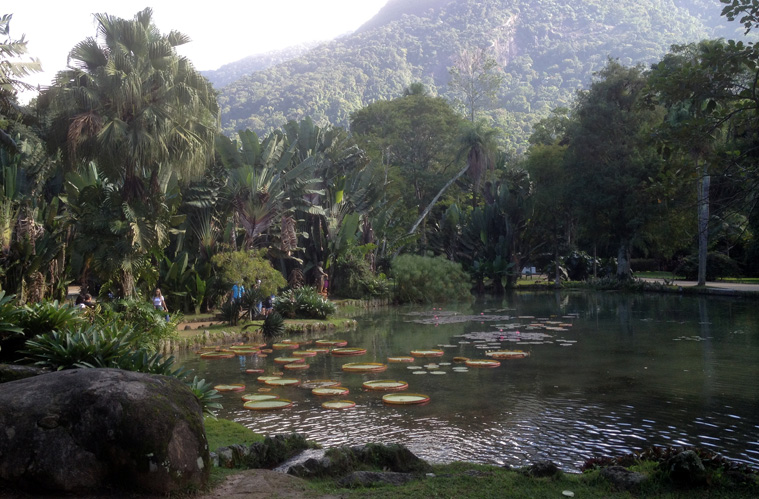
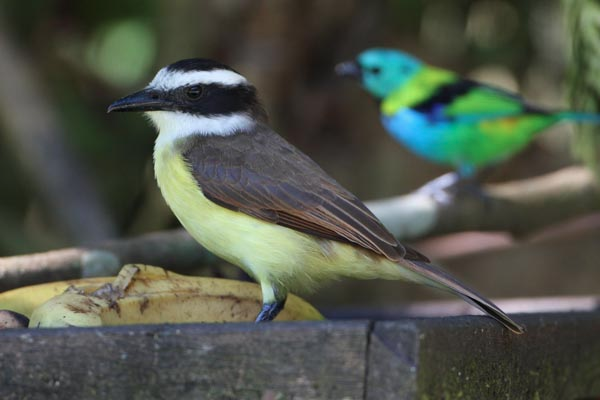
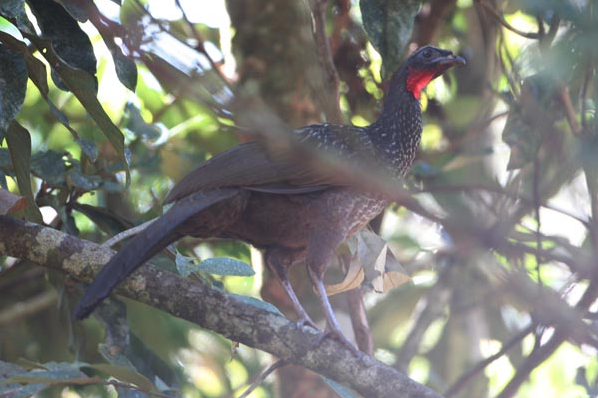
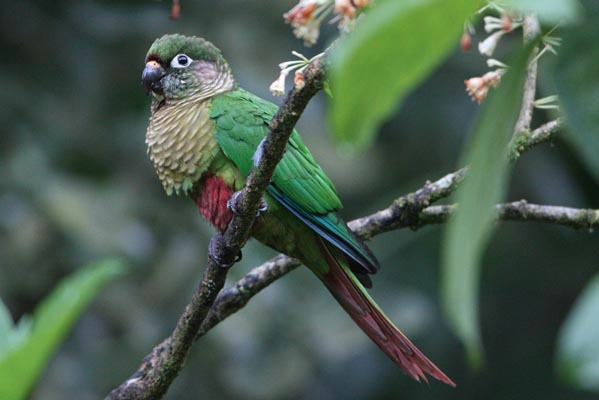
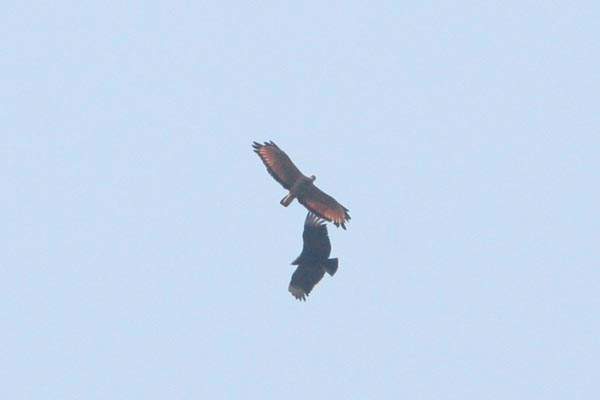
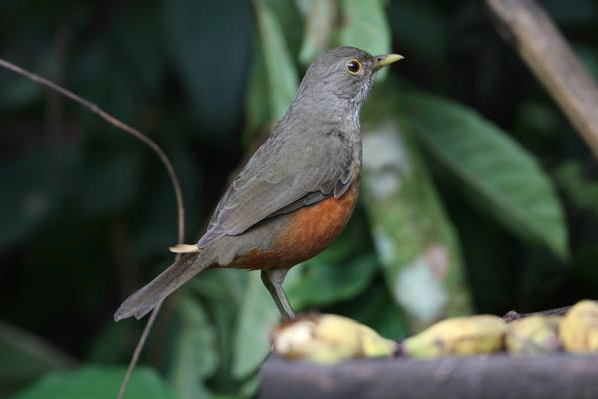
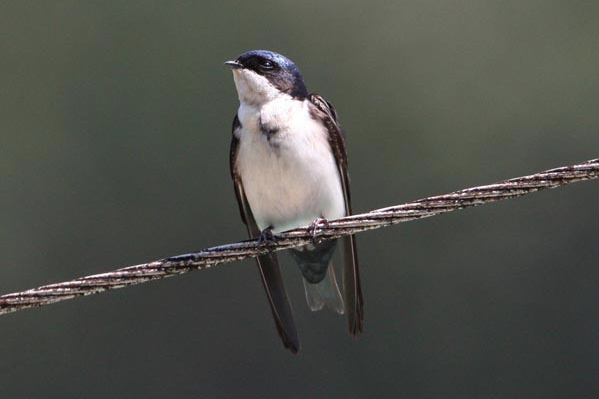
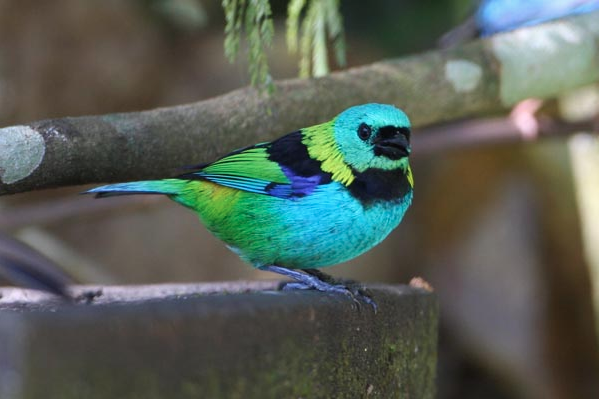

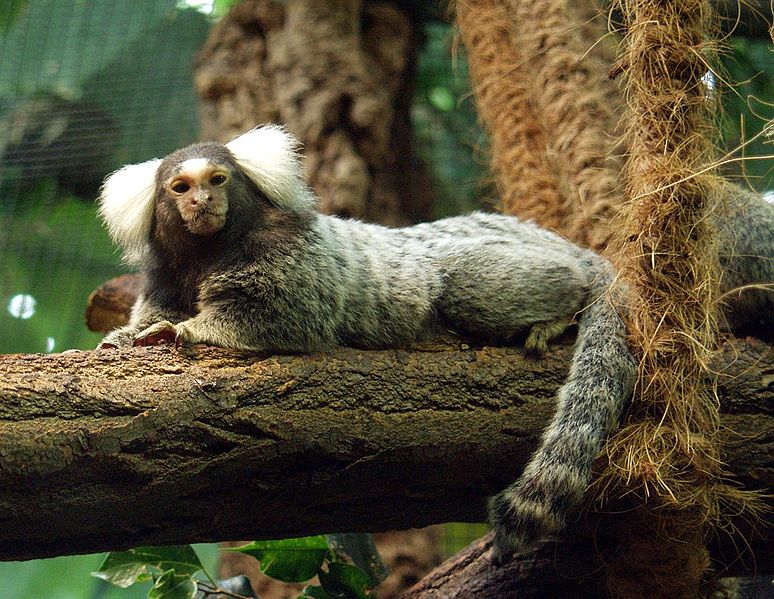
Priscilla – you’ve met Calypso, our pet parrot? She is a maroon-bellied parakeet, the same species you saw in the wild! They are native to SE Brazil, Uruguay, Paraguay and N Argentina. Lucky you!
Oh, of course! I love Calypso. No wonder those Brazilian parrots crawling up and down the trees and murmuring to one another felt so familiar.